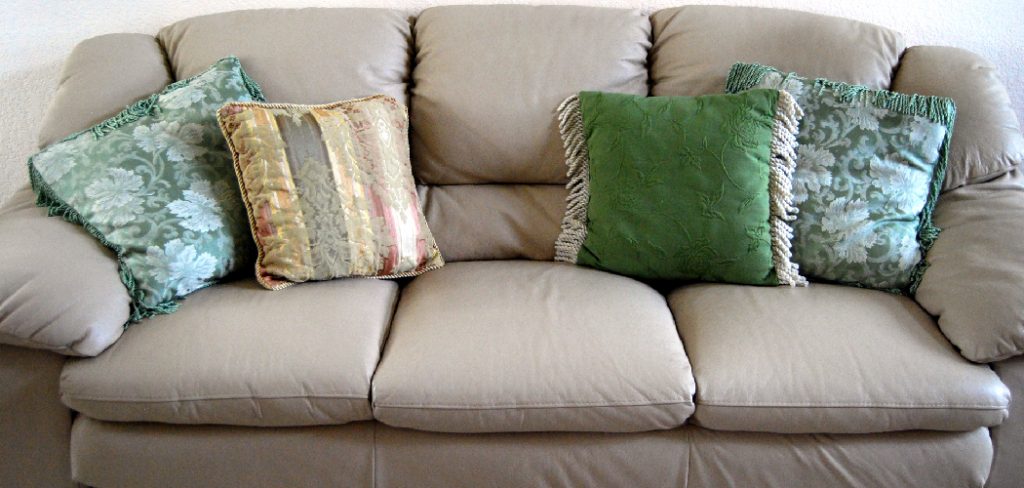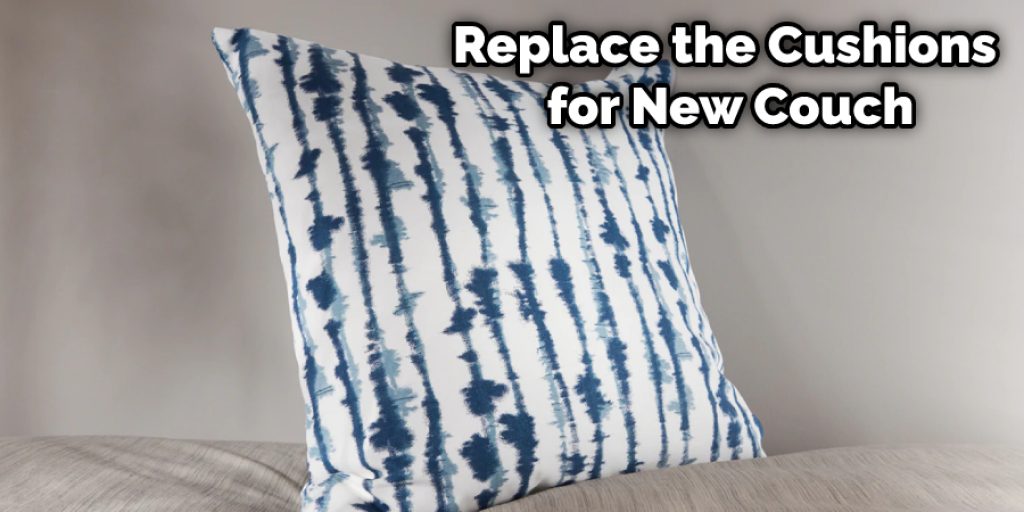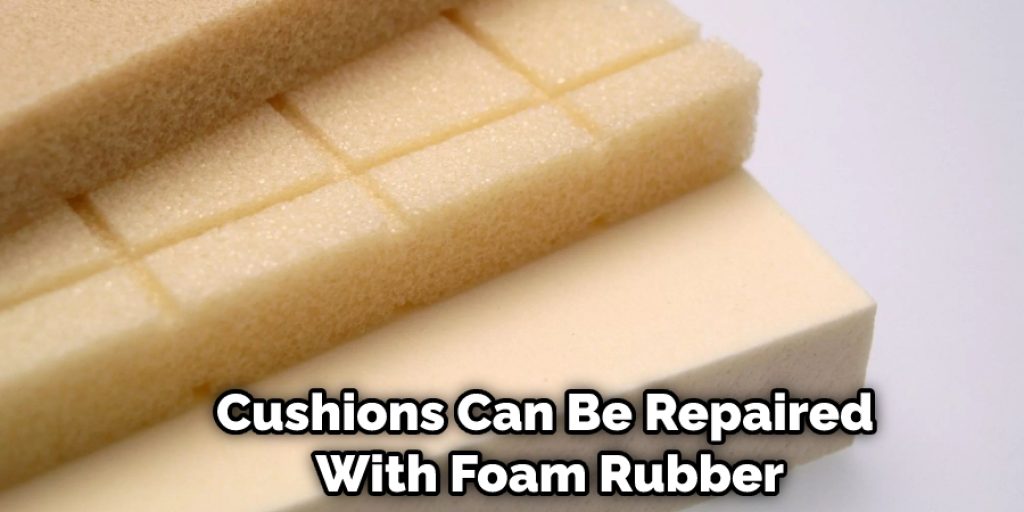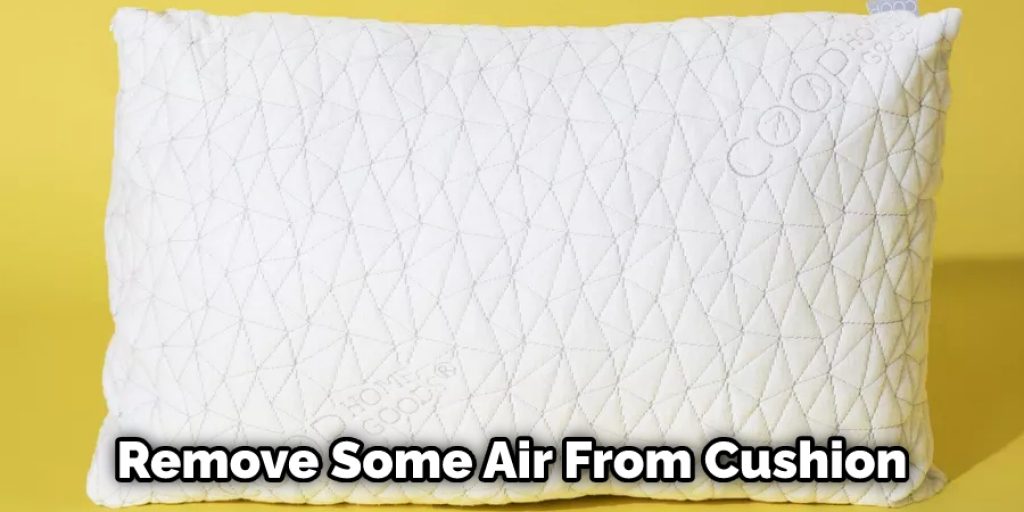How to Fix Sagging Couch Back Cushions
Couch cushions can sag for several reasons, but it’s a problem that can be easily fixed. Whether your couch is new or old, the chances are that the back cushions will start to sag at some point. This can be a real pain, especially if you like to recline on your couch. Thankfully, there are a few ways to fix this issue and get your couch looking and feeling like new again.

In this blog post, we’ll go over the different methods for how to fix sagging couch back cushions and help you choose the best option for you. We’ll also share some tips on how to prevent your couch cushions from sagging in the future. So, whether your couch cushion is just a little bit saggy or downright droopy, read on for the solution.
10 Effective Methods on How to Fix Sagging Couch Back Cushions
Method 1: Re-Stuffing the Cushions
When your couch’s back cushions become saggy, you can re-stuff them using either new material or the old stuffing. This will require you to open up the seams of the cushion. Then, you can sew it shut by hand, staple it closed with a manual stapler, or use unique purse frame wire staples.
Method 2: Adding New Foam
If re-stuffing the cushion doesn’t work, you can add new foam. If you’re using upholstery foam, purchase it in a quilting shop and use a staple gun to tack it onto the inside of the couch’s back cushions. You can also use polyurethane foam, which you can purchase at fabric stores. Next, cut the foam to fit the back cushions and secure it into place with upholstery pins or tacks.
Method 3: Placing Plywood on Top of Cushions
If you’re short on time, you can use plywood to hold up the couch cushions. Place the plywood on top of the cushion and measure how much you need to cut out to hold the entire cushion in place. Mark it with a pencil or pen, then cut around it with a jigsaw or handsaw. Sand down the edges and put the plywood back onto the couch.
Method 4: Using Felt Pads
Line the bottom of your couch’s back cushions with felt pads for added support. Cut out round pads from a piece of sturdy, thick fabric and use upholstery tacks or heavy-duty staples to secure them into place on the bottom of the cushion.
Method 5: Fixing Structural Issues
If the back cushions sag because of structural problems in the couch, such as loose joints or broken springs, it may be best to seek the help of a professional. Otherwise, you can unzip and remove the back cushions from your couch. Then, fill in any holes with wood filler and let it dry until it becomes hard and sturdy before putting it back. You can also fix sagging joints by tacking the couch material to the frame with upholstery tacks or regular staples.
Method 6: Replacing the Cushions
There’s no reason to go with saggy cushions if you’re buying a new couch. Instead, spend the extra money to get comfortable back cushions that don’t fall flat after a few months of use when shopping for a new couch. If you’re not in the market for a new couch, you can buy replacement cushion covers online or from stores that specialize in sofas and loveseats. If you’re looking for a high-quality couch that will last, keep an eye out for cushions that are stitched instead of glued. Also, consider the quality of the fabric and if it’s likely to hold up to regular use.

Method 7: Putting Towels Inside the Cushions
If your couch cushion is sagging, you can try to fix it by placing a small, soft towel inside the cushion to add support. You can also try putting two or three pieces of cardboard between the middle and bottom sections of the cushion, which should keep it from sagging too much.
Method 8: Using Canvas Straps
Stuff some canvas into the cushion to support the back. Cut two pieces of canvas about 2 inches longer than the piece of material you need to stuff inside your cushion. Sew them together on three sides, leaving one open side on each strap.
Insert a thick dowel or wooden pole in one end, then push it through the finished opening until it comes out the other end. Next, fill one canvas strap with sand and the other with material, then sew up the open sides to secure them in place. Finally, sew a blanket stitch along both ends of each canvas strap to create handles.
Method 9: Using Metal Chains and Fabric Straps
Cut out fabric straps about 3 inches wide and 2 feet long. Fold the fabric over lengthwise until it becomes a strip, then sew the edges together to make a tube. Sew one end of one strap with metal chains (the longer, the better). Insert dowel rods at each end of the fabric straps and fill them with sand. Insert them through your couch’s back cushions and secure them by tying a knot on each end.
Method 10: Finding Other Potential Solutions
Saggy cushions are annoying, but they’re also the most straightforward problem to fix. If you have more significant sagging problems with your couch, such as broken joints or damaged springs, it may be best to contact a furniture repair service, which can help get rid of the sag while preserving the overall integrity of your couch.
You Can Check It Out to Clean Couch Cushions That Cannot Be Removed
Some Tips and Suggestions
Here are some tips and suggestions on how to fix sagging couch back cushions.
1. Sagging couch back cushions can be fixed.
2. You may not need to purchase anything; you already have the supplies in your house for this fix.
3. They can be fixed in a few ways using minimal effort and time.
4. You do not need to take the couch apart or move it an inch from its place unless you find it necessary to remove the back cushions.
5. Couch back cushions can be repaired with foam rubber, such as an old bed mattress pad; you must use a good, sturdy needle and thick thread.

6. You may need to move some of your furniture around if you can not quickly get behind the couch where it is sagging.
7. You may want to remove the back cushions from the couch before starting; this may make it easier for you.
8. If you think the couch is too heavy and bulky, do not attempt to fix it by yourself; ask someone for help or call a furniture restoration company to come and fix your couch.
What Are the Benefits of Using a Sagging Couch Back Cushions?
Using sagging couch back cushions effectively makes your home look more vibrant. On the other hand, hanging the pillows on the couch makes it seems messy. Using them can also give you more space to place other items needed for your house.
The cushions are also much more inexpensive to replace. Hanging the cushions makes your house look messy. It can also give you more space to place other items needed for your home. The cushions are also much more inexpensive to replace.
Cushions are much more comfortable to sit on. Cushions are not only used for the couch but can also be placed anywhere in your house for your guests or yourself to use. For example, they are great ways to achieve comfort when you put them around a dining room table, inside chairs, benches, and other furniture pieces.
What Can I Stuff My Couch Cushions With?
Over time, the stuffing in a couch cushion can shift or break down. To replace old fill and restore firmness to a sagging surface, try one of these ideas. Using newspaper to fill couch cushions is an inexpensive option that makes DIY cushions look more professional.
The downside to using shredded paper as filler for your sofa cushions is that it does not retain its shape and must be readjusted periodically. Another potential downside: ink from the newspaper can transfer to your clothing, so you may want to wear an apron while stuffing the pillows with paper.
Polyester fiberfill, available at most crafts and fabric stores, works well for couch cushion filling because it holds its shape and is washable. Couch cushion stuffing made from down or foam can be purchased at various craft stores, fabric stores, and online retailers. Unlike shredded paper, these fillers retain their original shape and do not require frequent readjustment.
How Can I Make My Cushions Firmer?

Make your back-cushion foam firmer by removing some of its air through compression. First, vacuum the cushion several times to expel most of the air, then place it in a garbage bag along with a new vacuum cleaner hose. Next, put the hose end over the nozzle on the other end and turn on the vacuum for about ten minutes. This will remove the remaining trapped air.
You Can Check It Out to: Fix a Saggy Purse
Conclusion
If you’re looking for a fast and easy way on how to fix sagging couch back cushions, this DIY project may be the solution! The steps are simple enough that anyone can follow them. We hope these tips help create a better sitting experience for all of your guests who come over to visit. Have any other creative ways found success in fixing saggy sofa back cushions? Let us know!
We want to share new ideas with our readers, so they have more options to improve their own home decorating projects. Therefore, we recommend you try these solutions from most conservative to least conservative, as they may not all be necessary for your particular situation.




